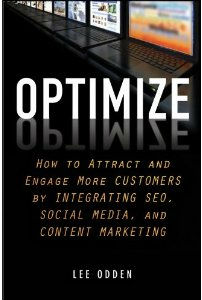 As marketers accumulate information about customers, it is also important to identify common characteristics and patterns to help guide messaging, engagement and offers.
As marketers accumulate information about customers, it is also important to identify common characteristics and patterns to help guide messaging, engagement and offers.
Behaviors that contribute to your business objectives like, sales, advocacy, sharing, referrals and repeat business might contribute to your understanding of an “ideal” customer that can be characterized as a persona:
Admin Bob – Influences the CEO on software purchases and cares about price, service and speed.
Being able to identify your “best” customers also means there’s another end to the spectrum: patterns that reflect undesirable customer behaviors and an “avoid” persona:
Gatekeeper Jane – Maintains power by filtering information to the CEO about software purchases. Cares about control, recognition and status quo.
Companies that solve different problems in different markets may determine that multiple personas best represent their target audience.
Understanding the pain points, goals and topical preferences of your customers’ personas provides invaluable insight into planning content to guide that customer through the buying cycle. The motivations and context that bring a customer to search or tap into their social network for recommendations can then be translated into tactics.
How do you use personas in online marketing?
Content Planning – Based on the need, pain point or goal for your ideal customer persona, identify if content already exists to meet it. If sufficient content does not exist, incorporate it into the content plan for story creation . Map your customer needs like “How can I back up my computer without having to worry about losing disks or remembering to schedule?” to specific content like an article, how to video or even a product page that will help guide that persona along in the sales cycle.
SEO – Keywords in demand that represent the product or service relevant to the persona’s need should be researched for popularity and competitiveness. Based on the back up example above, research more than the obvious “computer backup” to include phrases that describe situations or scenarios like “computer back up without disks” or “automatic computer back ups”. Keyword optimize existing content and incorporate SEO copywriting into the task list for ongoing creation of content according to the content plan.
Social Media Presence & Engagement – In what social channels does the customer persona participate? Where are they influenced? Based on persona participation, determine if a brand presence exists at all. If so, does it share and engage with content related to the ideal customer persona’s needs and goals? If not, factor that social content opportunity into the brand social media strategy for creating a social presence. What social topics is the persona motivated by? Do threads of discussion already exist in social channels relevant to the customer goals? How can your brand be an authoritative voice on those topics? Incorporate relevant social topics in your community management, social content and engagement approach relevant to the ideal customer persona.
In the assessment of existing web page and social assets, determine how well those search and social media assets perform in terms of ranking and social visibility. Reconcile the difference between current performance and the ideal in order to better attract, engage and inspire the target persona. Add new content, optimization and social engagement tasks accordingly. Also consider what metrics will help you identify whether efforts to connect with your ideal persona are successful or not.
A fragmented effort within search, social media and content marketing helps no one. Not customers and certainly not companies.
Competition for attention within search results and on the social web is only going to increase as more brands become publishers and more customers create and socially share content. The need to create a relevant experience for your target customers in an online world of information overload is more important now than ever.
Smart marketers would do well for themselves and the customers they’re trying to reach by investing in the development of customer personas that reflect the desires, goals and key traits of their best customers. Translating customer insight into quality keyword optimization of web pages, social content and digital assets for specific phrases according to the searcher’s needs in the buying cycle is an important step along with social engagement. As a result, you’ll deliver a more relevant experience for both search engines and for customers that is worth sharing on the social web.
Next steps for leveraging customer personas in your digital marketing mix:
- What are the common characteristics of your best and worst customers?
- Collect information on common customer data points including: content preferences, search phrases, social networks, and the types of products or services they buy or “like”.
- Based on your research and “best customer” characteristics, create and name an “ideal” customer persona
- Map the needs and goals of customer personas to your web and social content planning.
Are you leveraging customer segments, profiles and personas to inform your content planning? What about content optimization and social engagement?
 Excerpt with permission from Optimize: How to Attract and Engage More Customers by Integrating SEO, Social Media and Content Marketing, published by Wiley. (Affiliate Link)
Excerpt with permission from Optimize: How to Attract and Engage More Customers by Integrating SEO, Social Media and Content Marketing, published by Wiley. (Affiliate Link)


